The auto industry in a VUCA world
 Shekar Viswanathan- Vice Chairman and Whole Time Director, Toyota Kirloskar, considers what mean VUCA means for the automotive industry
Shekar Viswanathan- Vice Chairman and Whole Time Director, Toyota Kirloskar, considers what mean VUCA means for the automotive industry
The auto industry and all other industries associated with it have been engulfed in a VUCA world with the advent of the push given exclusively to Electric vehicles (EV). Policy initiatives such as reducing GST rates to 5% on Electric vehicles while maintaining other tax rates at 28% to 50% has certainly led to uncertainty for the internal combustion engine (ICE) based auto industry. This has also made the whole process of decision making for the auto industry very complex as customers have turned negative in their approach to ICE vehicles.
The questions bugging the auto industry are : Should it abandon manufacture of ICE vehicles and focus only on EV’s or should it make both? Is the customer going to buy EV’s given the lack of charging infra for the present or will he demand best in class ICE vehicles? Will financing be available for EV’s on the scale of ICE vehicles? How will the financial services industry put a residual value on EV’s. Till these questions are resolved does the ICE industry cut back on production and lay off workmen?
Completing the VUCA picture is the impact on the exchequer. With such a massive reduction in taxes on EV’s and the demand for ICE vehicles set to fall precipitously, will the government be able to garner enough taxes to meet its budget target?
The important point to note is that every stakeholder is affected in a VUCA world – only the quantification and timing of the impact is what every stakeholder is grappling with. The leaders of the auto industry are driving transformative change within the product line up they have and complying with regulatory changes – if they fail, the government will fail.
Prepared for disruptive change
 Dhirup Roy Choudhary, Managing Director & CEO, HIL, talks of strategizing in dynamic business environments
Dhirup Roy Choudhary, Managing Director & CEO, HIL, talks of strategizing in dynamic business environments
VUCA is inherent to any business – something, we cannot avoid. Business threat and challenges it poses is not a calamity, but our ability as managers to learn from it – a true test of the mettle in us. In this context, HIL stands prepared in two ways: a) The enterprise value system, process and vigilance to deal with eventualities and b) The training we induct into our managers to identify these threats and handle it diligently.
Our strategic plans are never complete until we review the potential risks VUCA poses to our business both in short term and long-term basis and continuously challenge them. Recognizing the market, political and economic realities with time and addressing them with deeper intelligences could be the difference between survival and failure. Many times, planning and preparedness makes us responsive to extreme challenges and at times, turn them to our benefit. ‘We don’t react to situation; we simply act as per pre-detailed plans. The more we test your boundaries, the more is the risk from VUCA and the more we mature as an organization learning from it.’
As someone rightly said: “When things do not go your way, remember that every challenge — every adversity — contains within it the seeds of opportunity and growth.”
Navigating challenging business environments
 Gyanesh Chaudhary, Managing Director & CEO, Vikram Solar talks of the key principles required to chart a successful trajectory
Gyanesh Chaudhary, Managing Director & CEO, Vikram Solar talks of the key principles required to chart a successful trajectory
With an ever-rising demand in the world, volatility, uncertainty, complexity and ambiguity appear to be woven into the fabric of businesses. Changing market dynamics and rapidly moving trend trajectories have made today’s business scenario very challenging to thrive in.
However, in my opinion, this is the best possible environment to grow and evolve a business into a brand. Strategies have to be made to pave the path towards goals, but they have to be agile, adaptable to any change in business while upholding core values like quality, performance etc.
As a business leader, I believe that challenges should be acknowledged while identifying the goals. A perfect business strategy is the sum of solutions that turn challenges into opportunities.
You would also need to continuously improve your knowledge of the changing business topography. And as a leader, you would have to uphold and practice honesty and transparency with your team and clients.
Lastly, the only way to reach your goals or even surpass them in this challenging market is to be one with your team. So, share your vision with your team, let them be inspired by your belief in your own dreams, ideas, and actions and it will lead your business to success.”
Adapting to Complexity
 Jay P. Desai, Founder & Managing Director, UC STRATEGY, unravels the complexity of modern-day business
Jay P. Desai, Founder & Managing Director, UC STRATEGY, unravels the complexity of modern-day business
The global business environment is an entangled web of complexity. The opposing forces of globalisation, protectionism and internet-based collaboration have resulted in the development of a deeply inter-dependent, global, business ecosystem. Consequently, businesses are confronted with a VUCA world (volatile, uncertain, complex, ambiguous) that they struggle to decipher.
The ability of an organisation to continually adapt to this dynamic and rugged economic, social and political landscape, is now critical to its survival. Why do a few organisations survive and even thrive during turbulence, while most others are relinquished to the dustbin of business history? Sobering statistics show that 99% of all companies that have ever existed in the history of business, are now extinct.
A significant but almost invisible analogy is that the inter-connected global business ecosystem now very closely mimics a natural ecosystem (often referred to as a complex adaptive system). The VUCA world that businesses face, however, pales in comparison to the temporal and spatial scale of the complexity of natural ecosystems. The assortment of adaptive strategies that species have unknowingly deployed over the past 550 million years in the natural process of evolution, are therefore worth a close examination.
Using the metaphor of a natural lens it becomes clear that organisational strategies should not purely be modeled on linear “newtonian” logic, so deeply embedded in management thinking. Three key “adaptive strategies” emerge to be important for consideration:
Activate Fitness Landscape – navigate the rugged business landscape with strategies that explore adjacencies (adaptive walks) and diversification (random jumps)
Adopt Emergent Strategies – capitalise on opportunistic events (disruptive accidents), not just relying on planned/ deliberate strategies
Acquire Multiple Strategies – run multiple, divergent business strategies simultaneously (parallelism) as far as possible.
This “adaptive strategy” approach can help build organisational resilience in a VUCA world
Managing in a VUCA World
 Prashant Nagre, CEO, Fermenta Biotech, offers a perspective on how to strategize and plan in challenging environments
Prashant Nagre, CEO, Fermenta Biotech, offers a perspective on how to strategize and plan in challenging environments
In a world wrought with the VUCA parameters, here is how to create shared value and ensure business continuity:
Volatility: In a state of dynamic instability such as price fluctuations, it is imperative to make the following investments that match the risk of rapid changes:
- Devote time and resources to preparedness – stockpile inventory
- Use data analytics to minimize the unpredictability
Uncertainty: A lack of clarity for the future, like a potential competitor’s entry into the market, can be dealt in the ways below:
- Maintain flexibility in your strategy
- Invest in information such as primary research and market reports
Complexity: Making sense of the multitude of variables, such as a new geography with unfamiliar
regulatory norms, can be done by acquiring know-how through internal and external sources:
- Bring in specialists in your human capital
- Collaborate with partners who know the environment
Ambiguity: In cases when precedents are unknown or inexistent, like when launching a new product
outside your core competency in emerging markets, navigate through the fog by:
- Setting incremental and clear goals for employees
- Being open to new and divergent ideas
Whatever the state your business is in, maintaining clear communication with all stakeholders is the key to sustainable growth.
Embracing change
 Satyakam Arya, Managing Director & CEO, Daimler India Commercial talks of the mantras needed to chart fresh growth trajectories
Satyakam Arya, Managing Director & CEO, Daimler India Commercial talks of the mantras needed to chart fresh growth trajectories
The automotive industry will be at the pinnacle of VUCA in the next 10-15 years which could primarily be overcome by transforming the landscape of how traditional businesses are run. This means that an organization should allow its people to embrace a future that will emerge; without having a traditional cause and effect. Organizations that resist change, expect definitive paybacks will not be able to embrace this environment. This calls for organizations to have an appetite for failure as well as agility to quickly change course like a start-up to fulfill ever evolving customer needs. The mantra will be to rapidly prototype, pilot, and launch, or go back to the drawing board.
At DICV, we have launched ‘THE FARM’, an initiative to cultivate innovation and drive an entrepreneurship mind-set internally- making our people partners in this transformative journey. We are further nurturing a swarm culture to erase hierarchical boundaries wherein people of different competencies engage towards developing new ideas into market ready solutions. These competencies can be broadly classified as disruptors (people who bring innovative ideas), scalers (people who can quickly scale the idea into a viable business), and executioners (people who can run the business efficiently on a day-to-day basis). Similarly, we will be extending our engagement with premier institutions and set-up a start-up incubation cell.
From a leadership perspective, it would be of utmost importance for us to provide a clear vision, necessary atmosphere and resources to support our people, while staying focused on long term values and purpose with the customer always at the centre. This calls for a cultural shift to drive efficiencies throughout system and the ability to handle unpredictable situations.
 Ambati Venu, MD, Abbott India Limited
Ambati Venu, MD, Abbott India Limited
“Operating in a VUCA world is not new in healthcare – the industry has always been dynamic with rapid adoption of technology and information. What keeps us steady in this environment are two things: our customers and agility. At Abbott, we are guided by our mission to help people live their best lives through the power of good health. To do this, we have to put the people who use our products in the middle of our decision-making. And to truly deliver on this promise, we have to act with speed and proactive agility, both in strategy and operational execution. One way we do this is by promoting the free flow of dialogue within our teams through reverse mentoring and internal think-tanks. An idea or solution can come from anywhere, and we encourage entrepreneurship. This builds excitement and trust within the organization and helps us achieve our mission to deliver great products for people in India.”


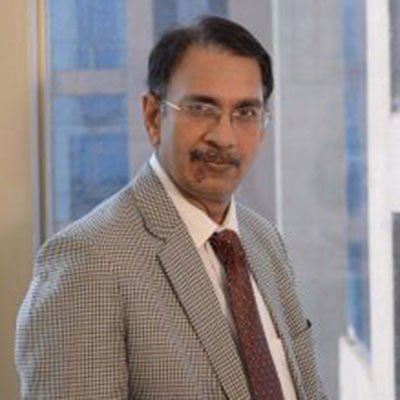 Shekar Viswanathan- Vice Chairman and Whole Time Director, Toyota Kirloskar, considers what mean VUCA means for the automotive industry
Shekar Viswanathan- Vice Chairman and Whole Time Director, Toyota Kirloskar, considers what mean VUCA means for the automotive industry Dhirup Roy Choudhary, Managing Director & CEO, HIL, talks of strategizing in dynamic business environments
Dhirup Roy Choudhary, Managing Director & CEO, HIL, talks of strategizing in dynamic business environments Gyanesh Chaudhary, Managing Director & CEO, Vikram Solar talks of the key principles required to chart a successful trajectory
Gyanesh Chaudhary, Managing Director & CEO, Vikram Solar talks of the key principles required to chart a successful trajectory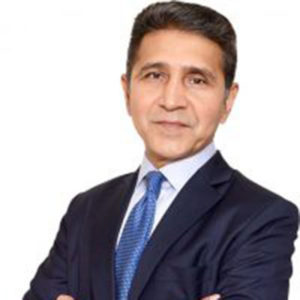 Jay P. Desai, Founder & Managing Director, UC STRATEGY, unravels the complexity of modern-day business
Jay P. Desai, Founder & Managing Director, UC STRATEGY, unravels the complexity of modern-day business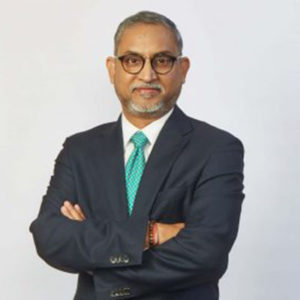 Prashant Nagre, CEO, Fermenta Biotech, offers a perspective on how to strategize and plan in challenging environments
Prashant Nagre, CEO, Fermenta Biotech, offers a perspective on how to strategize and plan in challenging environments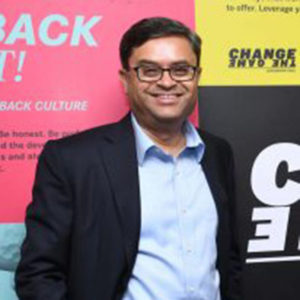 Satyakam Arya, Managing Director & CEO, Daimler India Commercial talks of the mantras needed to chart fresh growth trajectories
Satyakam Arya, Managing Director & CEO, Daimler India Commercial talks of the mantras needed to chart fresh growth trajectories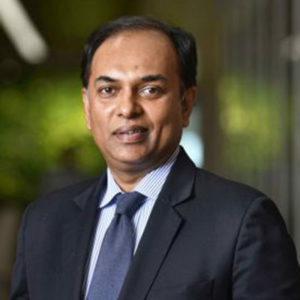 Ambati Venu, MD, Abbott India Limited
Ambati Venu, MD, Abbott India Limited







